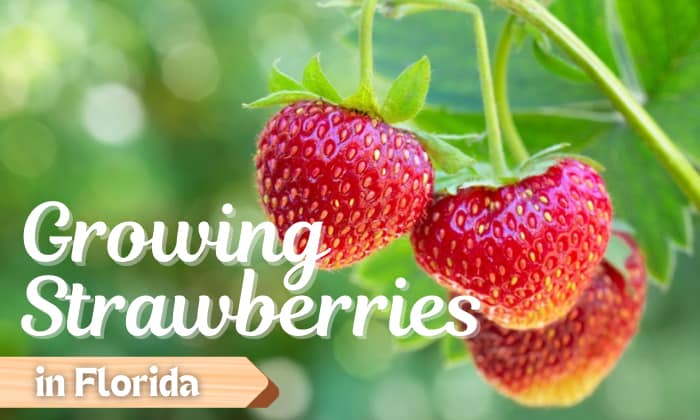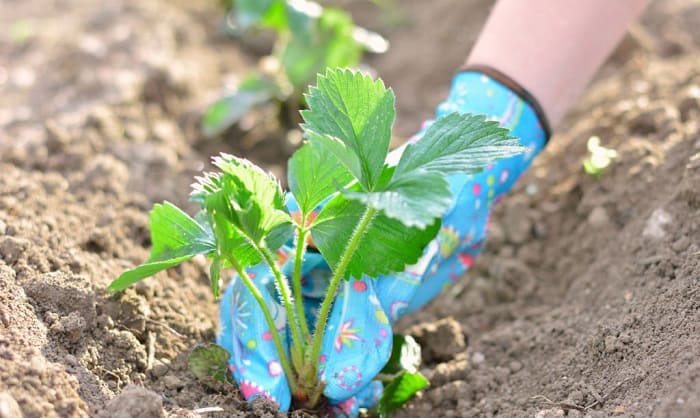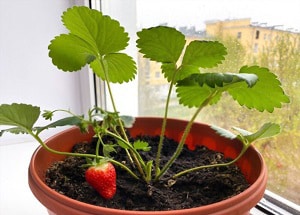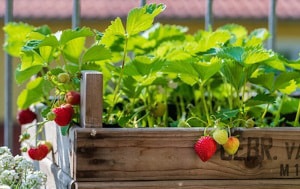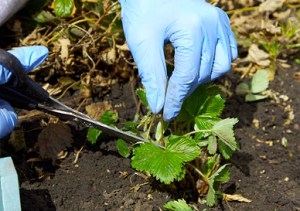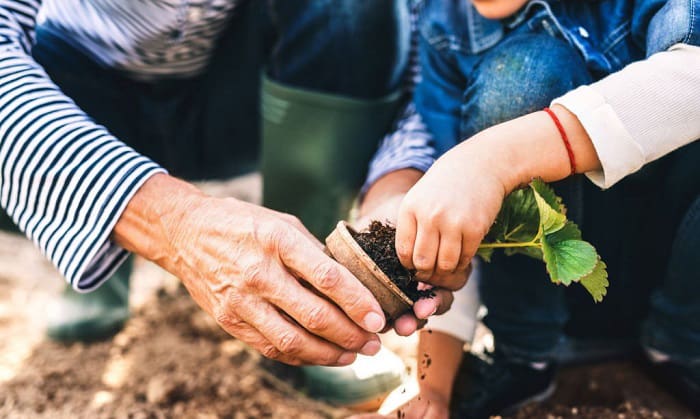Florida is a top strawberry producer in the US, so it’s a fact that the state’s climate suits this fruit well.
However, farmers cannot plant strawberries here anytime they want, given these crops’ low heat tolerance and the Sunshine state’s hot spring and summer.
In practice, fall is the best time for growing strawberries in Florida. As for how to cultivate them, continue reading below.
Table of Contents
When to Plant Strawberries in Florida
As stated above, fall is the planting season for Florida strawberries. This period has moderately warm weather (around 50 to 80 degrees Fahrenheit), perfect for helping these crops spread roots and bear fruits.
To narrow down the best time for growing strawberries, keep in mind these tips:
- Don’t plant too close to summer or when the weather is over 85
- Don’t plant too close to the first frost. Give the crops enough time to prepare for winter dormancy and eventually bloom in spring. In practice, the temperature for strawberries should be 60 to 80 degrees Fahrenheit during the fall season.
- When frost appears, protect the plants with row covers. Though they can withstand colds as low as 22 degrees, 32 to 28 degrees already pose significant risks to strawberries’ health, and they may die before spring comes without proper care.
To make scheduling easy for you, here are the dates for planting strawberries in Florida:
| In Central Florida | September 25 – October 25 |
| In South Florida | October 1 – December 1 |
| In North Florida | September 15 – October 15 |
How to Grow Strawberries
Before we get into the steps for growing strawberries, note that Floridians cultivate them from transplants rather than from seed. So, purchase either bare-root or plug strawberries and follow the tips below.
1. Plant in Florida in containers
It’s best to pot your transplant as soon as you receive it, but don’t forget to water the roots first. A 14-inch container should support up to three plants; as for the depth, 6 inches should suffice.
Fill the container with an all-purpose peat-free mix or compost rather than soil. Doing so will ensure adequate aeration and drainage.
Then, add in a handful of blood fish and bone meal or as much as your product recommends. You can also opt for an organic fertilizer as long as it’s high in potassium and low in nitrogen. Make sure to leave some space at the top of the container for watering.
At this point, you can put the strawberry in the container. While doing so, make sure the crown and leaves are above the soil, but the roots are covered by the potting mix.
It’s also best to let the leaves and stalks hang over the pot’s edge if they don’t stand up straight. This practice will ensure more space inside the container for the strawberries, which should be 8 inches apart.
Finally, pat the mix with your hand so it’s firm and even—layer mulch or straw on top of the pot for winter protection.
Then, set the container somewhere with eight hours of sunlight per day and water regularly so that one inch of the plant mix is moist.
Note that when growing strawberries in containers Florida gardeners should opt for light-colored pots with drainage holes.
2. Plant in Florida in raised beds
Aside from pots, strawberry plants Florida beds will also help the fruits thrive.
To prepare the beds for gardening, conduct a soil test. Generally, you should hope for a pH of 6.5 to 7 to accommodate strawberries. If the result doesn’t fall within this range, the test should provide recommendations on improving it and supplying nutrients for the crops you’re growing.
Measures include adding lime to raise the pH or incorporating sulfur to decrease it. Either way, you’ll do well to test the soil six months before gardening. This practice allows enough time for necessary amendments to take effect.
Moreover, use the fertilizer the test recommends. The standard guideline is to apply a balanced 10-10-10 formula prior to planting, but some soils may need less nitrogen and more potassium, and so on. At the same time, pick a slow-release product to prevent fertilizer burn.
Similar to gardening in pots, position strawberry plants so that their crowns are above-ground and their roots are in the soil. Space the strawberries twenty inches from one another and mulch the ground with polyethylene.
Throughout their development, give the plants eight hours of sunshine per day and an inch of water per week. If you have multiple strawberry rows, leave four feet of clearance between them.
Best Strawberries to Grow in Florida
When picking strawberry varieties for Florida, consider the following:
- Short-day cultivars like Florida Felicity, Florida Medallion, Florida Pearl, Florida Brilliance, Sweet Sensation, Winterstar, Florida Elyana, Winter Dawn, and Florida Radiance
- Florida Beauty, Sweet Ann, Keoki, and San Andreas for day-neutral strawberries
Note that Keoki and San Andreas are best for zone 9 and lower only, while Sweet Ann is suitable for up to zone 10.
How to Care for and Harvest Strawberries
1. Care tips for strawberries
Now that you’re aware of when to & how to plant strawberries, check out the advice on caring for them as well:
- When the strawberries are established, fertilize them in spring and fall if you see signs of wilting. During the fall, wait until the harvest is over, especially if you have a June-bearing variety – this type should also be fertilized once a year only. For both seasons, one pound of a 10-10-10 formula every 20 feet will do.
- During winter, cover in-ground strawberries with frost cl As for containers, you can just move them indoors. There’s no need to water strawberry beds after the first frost, but potted plants will still need moisture. As long as the potting mix doesn’t dry out, the strawberry should be fine.
- Watch out for pests and diseases, such as thrips, spider mites, fungi, and mildew. The first two are controllable using neem pesticides and insecticidal soaps, while the rest is manageable with fungicides.
Speaking of fungicides, some products worth trying are Abound, Merivon, Pristine, and Captan, since they target many diseases.
For angular leaf spots, Actigard will do, and if you want to treat phytophthora crown rot and leather rot, Ridomil is very effective.
2. Harvest strawberries
You’ve satisfied all strawberries growing conditions, and now they’re fruiting well. But when to harvest them?
In practice, if you see 3/4 of the fruits turning red, that’s a sign they’re collectible. If the flesh looks burgundy, that means the strawberry is overripe and won’t be as scrumptious. On the other hand, if there are green or white spots on the fruits, they’re not ready yet.
To harvest berries, pick from the stem and leave the green top in place. Discard all yields with rot or fungus to protect the healthy berries. Ideally, harvesting will take place in the morning so that the fruits keep for longer.
Frequently Asked Questions
Is it hard to grow strawberries in Florida?
No. Florida’s climate suits strawberry production well, considering the state has about 8,000 acres of the crop. The fruit itself is also straightforward to grow, even for beginners. To make planting it easier, you can pick disease-resistant varieties.
How long does it take to grow strawberries in Florida?
Strawberries will mature in 90 to 110 days, so a fall planting will result in a spring harvest. Though you likely won’t cultivate strawberries year round in Florida, it’s possible to enjoy a growing season from September to April.
Conclusion
Growing strawberries in Florida is relatively easy. You only need the right plant variety and a fertile potting mix or soil. With these things prepared, all that’s left to do is putting the strawberry into the planting hole and protecting it from pests and disease.
At the same time, avoid growing strawberries in summer, when heat can cause sunburn and even bring about dormancy.
Read next a detailed guide on ways to grow sweet potatoes in Florida.

Hi, I am William – Floridayards’ digital content creator. My job is to find answers to all your concerns with thorough research and our team’s expert advice. I will also bring you honest reviews on the best products and equipment for raising your beautiful garden. Please look forward to our work!


